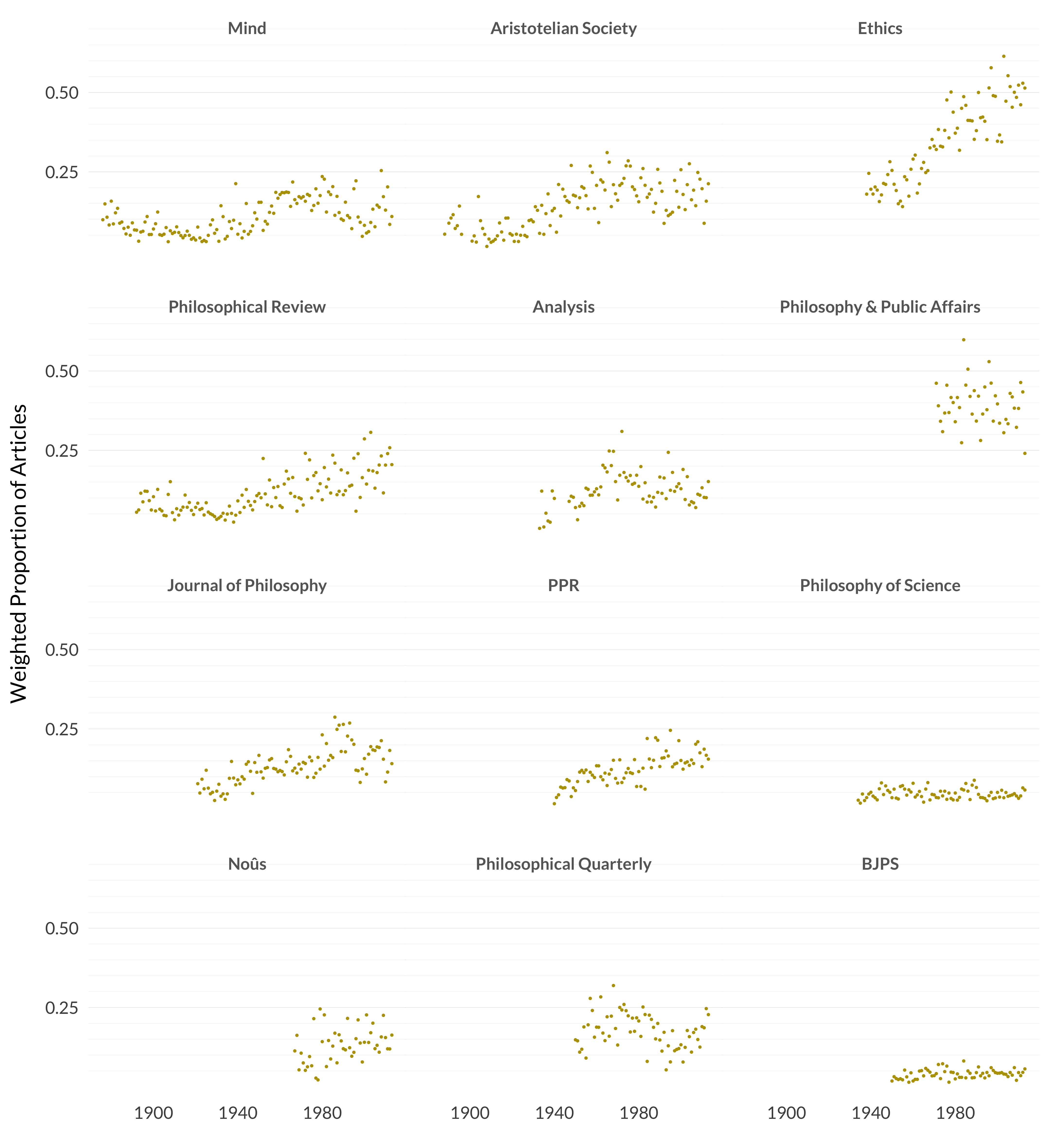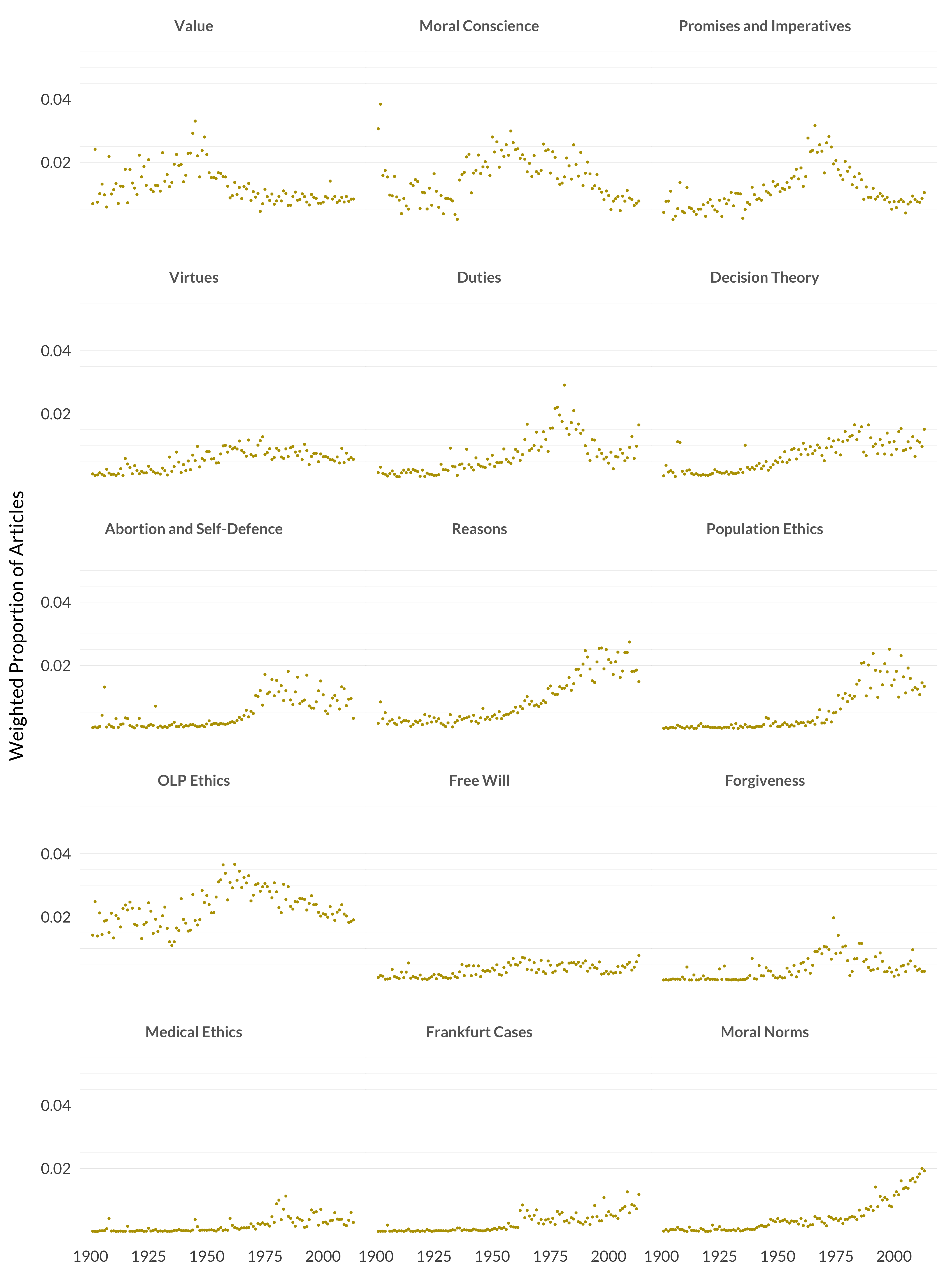4.3 Ethics

Figure 4.8: Proportion of each journal’s yearly publications in Ethics.
There are a lot of ethics articles in Ethics. That’s not surprising. But what’s really the story here is that the proportion of Ethics that is devoted to ethics keeps rising. The two most recently added journals, Noûs and Philosophy and Public Affairs, respectively have good and great ethics coverage, so that helps the upward trend as well. But the big story here is the consolidation of the key specialist journal. We will see this trend a few times as we move along.
Let’s look at how this is broken up into individual topics. I’m going to do a graph like this for every category, and they will all have the following restrictions.
- The nineteenth-century is excluded, and the years start in 1901.
- The Y-axis is capped at 0.06, i.e., 6 percent, and if there are points that are thereby excluded, I’ll list them separately in a table.
Both restrictions are motivated by the problems that affected the frequency graphs in the previous chapter. (What I’m doing here is a topic-by-topic version of the weighted frequency of articles graph.) There isn’t enough diversity in the early years, so some topics can be 10, 20, even 30 percent of the total. And there isn’t a good way to represent those numbers on a graph while also making the differences between 1 percent and 3 percent (which is what we care most about here) particularly visible. So I’ll just list separately the problematic data points.

Figure 4.9: Topics in ethics.
A quick note about the he subtopic “OLP Ethics”. The “OLP” here is for ordinary language philosophy. So this subtopic is the ethics part of ordinary language philosophy. I’m moderately confident that this really is part of ethics—it includes papers like Philippa Foot’s “Moral Beliefs”. But I’m not 100 percent sure about this, since it includes a lot of things that don’t feel exactly like ethics papers as we’d currently understand that. In general, ordinary language philosophy makes this kind of analysis hard.
Note how there are a few topics that peak one after the other: first value, then promises and imperatives, then duties, and now norms. But none of this rise and fall is visible in the overall graph, which is fairly steady. Some of these rises and falls comes from changing interests among folks in the field, but some I think comes from simply changes in fashionable terminology.